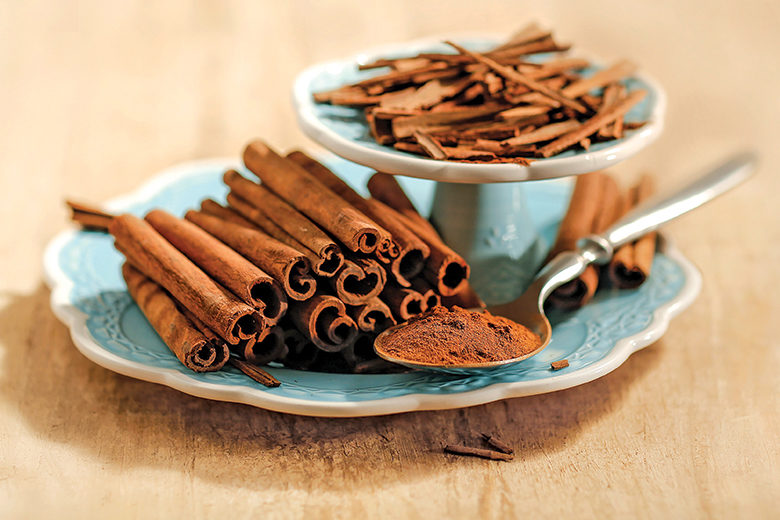
Nutritional Benefits of Cinnamon
By Tram Le, RD
One teaspoon of ground cinnamon contains just 6 calories and 1.4 grams of fiber. You’ll also find manganese and calcium in its nutrient mix. Cinnamon’s myriad of compounds include flavonoids such as proanthocyanidins, which can exhibit antioxidant effects through their free radical-scavenging properties. And cinnamon contains the essential oils cinnamaldehyde and eugenol. Because of their potential to inhibit bacterial growth in cell culture studies, cinnamon may play a role in food preservation.
Cooking with Cinnamon
By Madhu Gadia, MS, RD, CDE
Cinnamon is among the most distinct of spices. When its sweet aroma wafts through the house, you know something tasty is in the oven. Cinnamon is the dried inner bark from a tropical evergreen tree. When the bark is cut and peeled, it curls to form the familiar spiraled sticks or “quills.” While many home cooks keep cinnamon sticks on hand, it’s most often found in kitchen cabinets in its ground form. Cinnamon oil is also available, but it’s very potent and should be used sparingly.
There are two general types of cinnamon: Sri Lankan cinnamon (sometimes referred to as “Ceylon” cinnamon) and Cassia cinnamon. Sri Lankan cinnamon sticks are brittle and light brown with a mild sweet flavor. Cassia cinnamon sticks are thicker and coarser, darker in color and have a much stronger, almost bitter flavor. Cassia is more common than Sri Lankan cinnamon the U.S., and a number of Cassia varieties are available, including:
- Korintji cinnamon from Indonesia, used by most spice manufacturers and simply labeled as “cinnamon” on containers, with a warm and sweet, slightly spicy taste.
- Saigon cinnamon from Vietnam, known for its intense, sweet and spicy heat.
While cinnamon is most often used in desserts, its use in savory dishes is increasing, especially in fusion dishes. In the Eastern world, cinnamon is added to spicy dishes, such as Indian curries and in braised dishes in Chinese and Vietnamese cuisines. Cinnamon is also used throughout Mexican cooking from beverages to soups, stews, and other savory dishes such as Mole Poblano. Cinnamon is often a part of spice blends such as curry powder, garam masala and chai masala (spiced-tea). To maximize flavor, add cinnamon to hot oil, butter or water. Use sparingly; a little goes a long way.
Using Cinnamon in Food Service
By Karen Jacobsen, RD
A frequently used spice in institutional kitchens, cinnamon is found in almost all cultural cuisines, both by itself and in spice blends. Indonesian Korintji cinnamon’s sharp flavor tastes best in bakery items, sweet potatoes and rubs for chicken and pork. Saigon cinnamon’s volatile oil content and sweet, hot taste makes it ideal for dishes that are more complex in flavor, such as roasted vegetables, tart and citrus fruit, steak rubs, marinades, vinaigrettes, chili and stews.
Institutionally, ground cinnamon can be purchased in sizes ranging from 1- to 25-pound containers. Cinnamon sticks, packaged in 8-ounce containers, are also available and are typically used to add subtle flavor to hot beverages such as coffee, tea and cocoa. As with other spices, cinnamon should be stored in a cool, dry, dark place in a tightly closed container to prevent caking or clumping. Exposure to heat will volatilize and dissipate the aromatic essential oils and diminish cinnamon’s flavor. Shelf life for the ground form is approximately two to three years, while sticks can maintain their flavor and strength for approximately four years. Lengthy storage can affect the flavor intensity.
